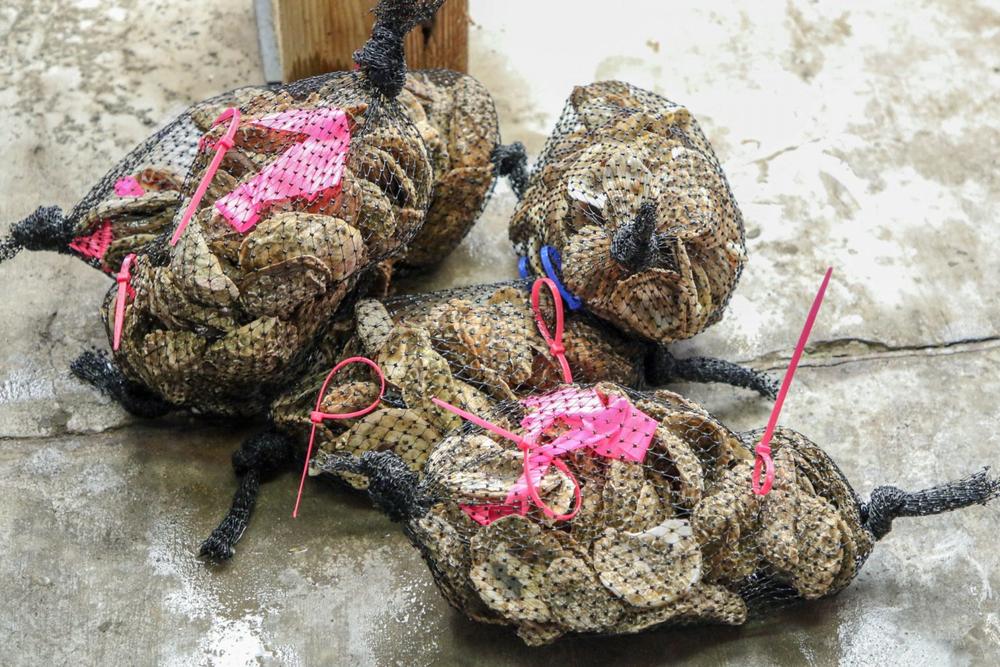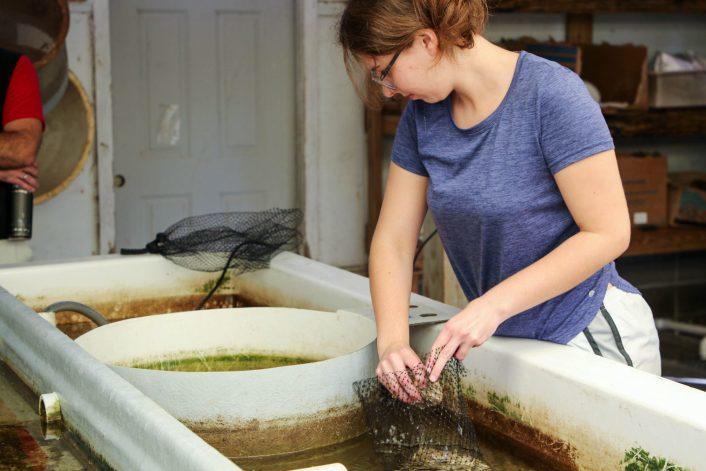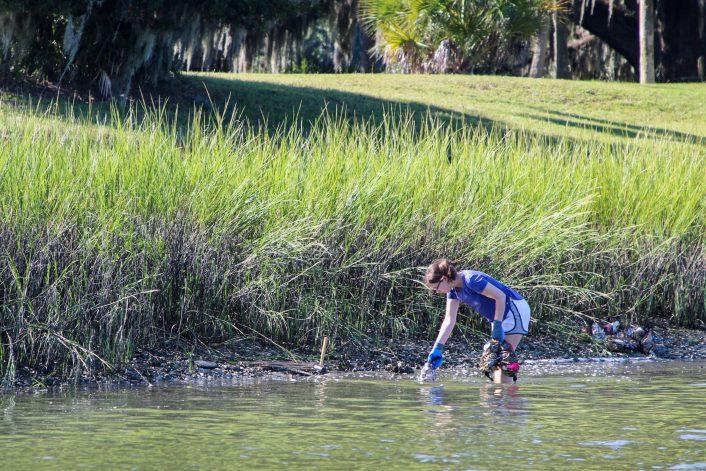
Caption
Bagged and tagged oysters are ready to be placed in the river. Research trainee and PhD student Sarah Roney is examining the effect of "fear chemicals" on the growth of oysters.
Credit: Emily Kenworthy/UGA Marine Extension and Georgia Sea Grant




